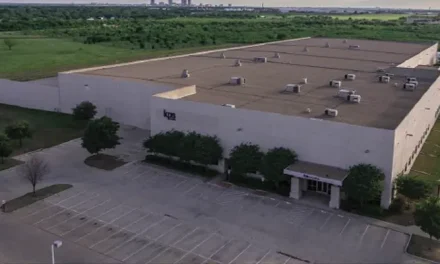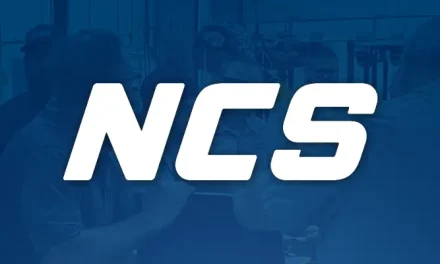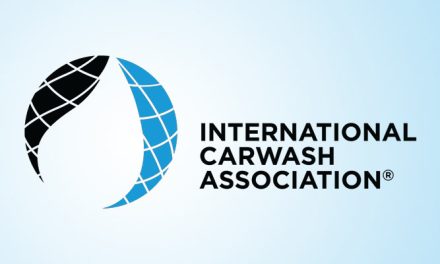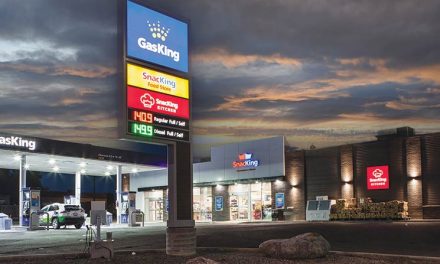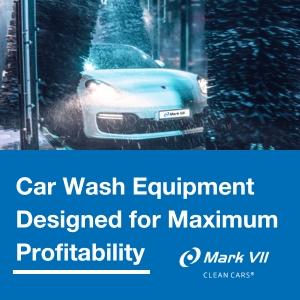
Be “Thaw”tful When Outfitting Your Secondary-Containment System
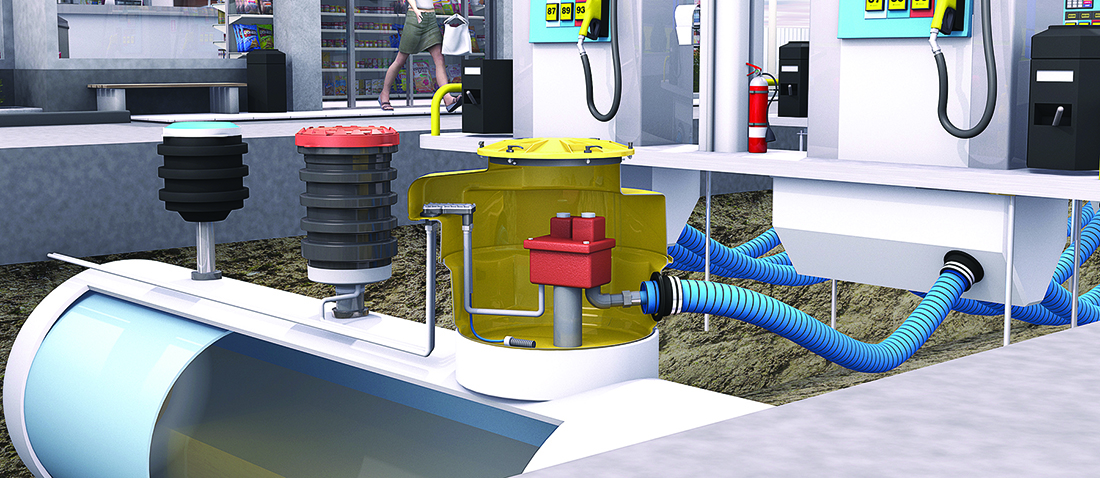
By Ed Kammerer
While they may eagerly anticipate its warmer temperatures, happily chirping birds and longer days, the spring thaw can also bring a sense of trepidation to the operators of retail-fueling businesses in Canada. The reason for this trepidation is plain for the eye to see when you look out the window: Where is all that piled-up snow and ice going to go when it melts?
Thanks to gravity, that melted runoff will seek the lowest point in which to settle. The problem for retail-fueling operators is that the lowest point can oftentimes be the secondary-containment system at their sites. In fact, fugitive-water ingress into secondary-containment equipment is now acknowledged as one of the main challenges that retail-fueling networks face today.
This forces many site operators to hope for a best-case scenario: the existing secondary-containment system is able to capture the intruding water before it can infect the motor-fuel supply by seeping into the site’s underground storage tanks (USTs). Admittedly, every retail-fueling site does (or should) have some type of secondary-containment system in place. With that in mind, the question becomes: Is that system new enough or robust enough to reliably keep the unwanted water ingress at bay or are you annually pumping water out of flooded sumps, spill containers and secondary piping?
Which brings us back to one of our favorite topics: the benefits of being a proactive, rather than reactive, fuel retailer.
Last year, we made a three-part case in Convenience & Carwash Canada that being proactive in surveying the condition of your fueling equipment and being prepared to replace it before it catastrophically fails or to consider an upgrade when available is the best approach to take. Another way to look at it is, if you are building new sites, do you just continue to spec the equipment you’ve always used? Or do you look for ways the technology may have advanced in recent years and consider the next-generation version?
As you may have guessed, we recommend a proactive approach when it comes to your secondary-containment system.
Meet The Family
OPW Retail Fueling, Smithfield, NC, recognizes the frustrations and potential risks that go hand-in-hand with spring-thaw water intrusion. Therefore, OPW has worked diligently to build a portfolio of products that have been specially designed to keep water where it belongs – outside of your fuel tanks and secondary-containment system. Among these Watertight Wonders products that OPW offers in this realm are:
DSE Dispenser and TSE Tank Sumps: As OPW’s newest dispenser-sump innovations, the DSE and TSE models are members of the E-Series Containment Sump family. Both sumps are part of the industry’s first composite containment system that is built using the advanced sheet-molded compound (SMC) fiberglass-manufacturing process. The SMC manufacturing process produces sumps with watertight entry fittings, consistent wall thickness and smoothness with a value price when compared to competitive fiberglass tank sumps. In fact, these fiberglass sumps are now priced similarly to polyethylene sumps. It is well documented that lower-cost polyethylene sumps are susceptible to sidewall deflection when exposed to extreme hydrostatic forces. These same forces are the ones that appear during the thaw when higher-than-normal water tables are created. The stronger SMC fiberglass material eliminates sump deflection, which is one of the leading causes of entry-fitting failure. And we all know that when an entry fitting fails, not only does it allow the nuisance of water to enter the containment chamber, it also means that if fuel should end up in that same space it will end up in the ground. Their uniform construction makes the sumps easy to nest, stack and unstack, which helps optimize distributor inventory and job-trailer space, while the one-base design eases ordering and site-compatibility issues. All of these features make the DSE and TSE sumps the new standard in best-in-class quality, fast delivery lead times and affordability.
ElectroTite No-Drill Tank Sumps: The ElectroTite is the retail-fueling industry’s first and only conduit-less tank sump that has factory-installed sealed conduit ports and an integrated electrical wiring junction box. This enables the sump to be installed as-is when it arrives at the fueling location, with no pre-installation drilling required. The no-drill design also reduces the risk that water intrusion will occur or unintended leak points will form in the system due to the drilling of entry points, which also helps to optimize installation time. The ElectroTite sump also excels through the use of a vacuum-assisted resin transfer molding (RTM) manufacturing process that ensures consistent wall thickness, a smooth finish inside and out, and watertight, leak-free operation. The ULc-listed, single-piece, cast-aluminum explosion-proof junction box with bolt-on access cover creates space to re-route communication wires and loop additional sensors without having to create build conduit home runs from the store to the tank field. Additionally, a safety shield allows all high-voltage and sensor wires to be separated in the same junction box.
Rigid Entry Fittings (REF): Factory-installed, dual-sided rigid entry fittings (REF) provide double protection by sealing the pipe inside and outside the sump, which prevents the intrusion of groundwater, rain and melting ice or snow and keeps all of the fluid that is collected in the sump from entering the access pipe. They are designed with a hard-shell exterior with a minimal amount of exposed rubber, though they are still able to accommodate ground movement. Their construction also features a rigid composite material that eliminates entry-fitting degradation that can result in water intrusion. This allows the REF to offer sealing redundancy throughout, which enables it to achieve maximum containment and unmatched protection from water intrusion.
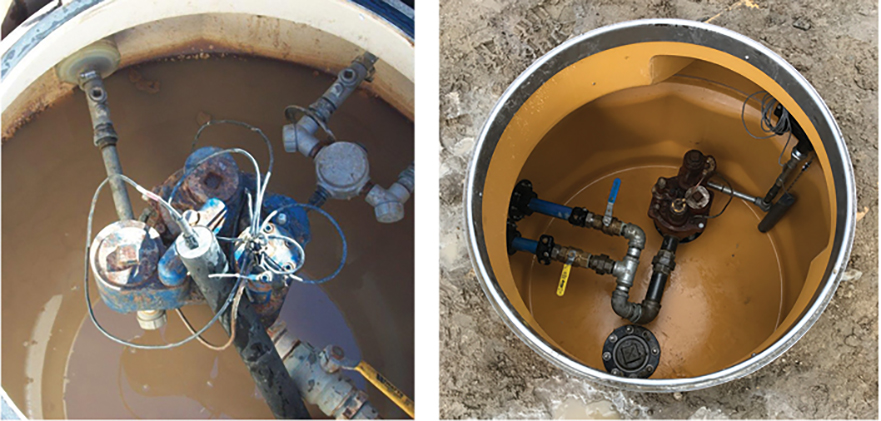
Before and after: Winter thaw and its corresponding runoff can be detrimental for secondary containment equipment at retail fueling sites (left). OPW’s ElectroTite No-Drill Tank Sump (right) features factory installed sealed conduit ports, meaning it can be installed without pre-installation drilling, reducing the risk of water intrusion and unintended leak points.
Conclusion
No matter the time of year, finding the best ways to reliably prevent not only storage-tank water intrusion, but also the nuisance of secondary-containment water intrusion should always be a top-of-mind concern for fuel retailers, but it takes on added importance as the spring thaw commences. To aid retailers in their quest to eliminate water-based fuel contamination, OPW Retail Fueling offers a next-generation suite of products, known as Watertight Wonders, that have been designed with water-intrusion prevention in mind. So, whether it’s time to replace aging equipment or you’re ready to perform a proactive upgrade, it pays to be “thaw”tful when considering your secondary-containment system.
Ed Kammerer is the director of global product management for OPW, based in Cincinnati, OH, USA. He can be reached at ed.kammerer@opwglobal.com. OPW is defining what’s next in fueling solutions and innovations worldwide. OPW delivers product excellence and the most comprehensive line of fueling equipment and services to retail and commercial fueling operations around the globe. For more information on OPW, please go to opwglobal.com.

